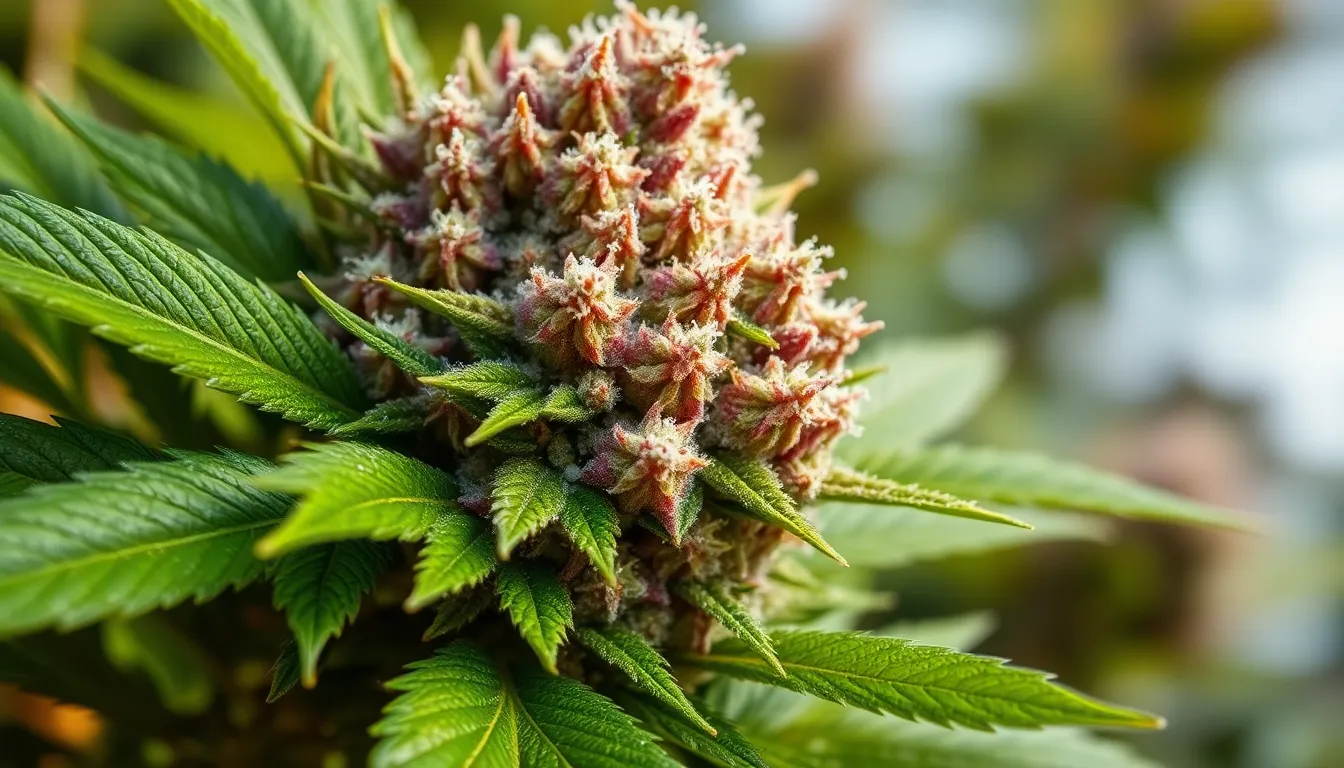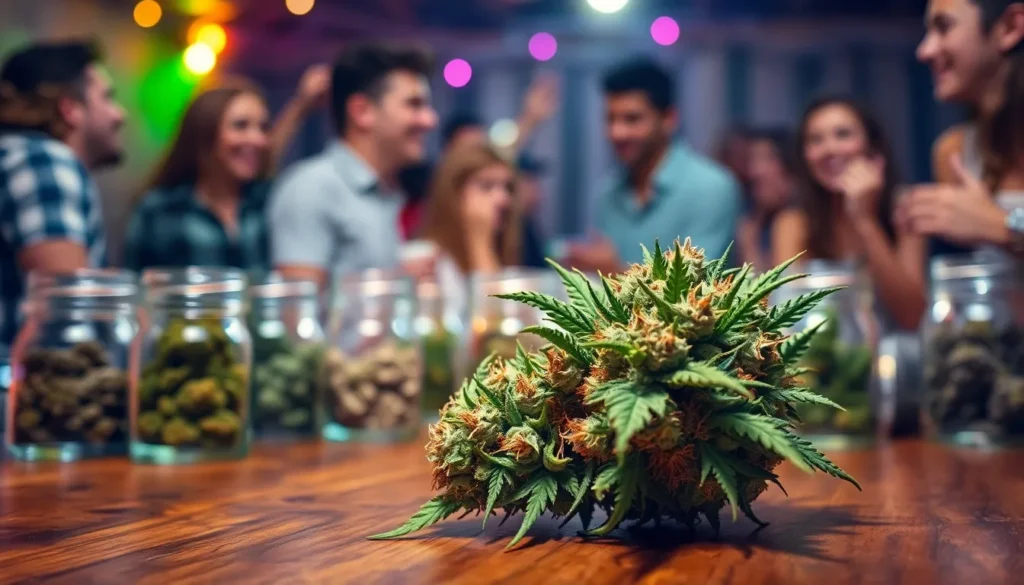When it comes to cannabis, the age-old question looms: does higher THC really mean a stronger high? Picture this: you’re at a party, and someone boasts about their ultra-high THC strain like it’s the Holy Grail of weed. But does that mean you’ll be floating on cloud nine or just stuck on the couch, contemplating life’s mysteries?
Understanding THC and Its Effects
THC, or tetrahydrocannabinol, is the primary psychoactive compound in cannabis. Higher THC concentrations often suggest more potent effects, but this isn’t always the case. Many factors influence individual experiences, such as the user’s tolerance and the specific strain’s chemical profile.
The entourage effect plays a crucial role. This phenomenon refers to the interaction between THC and other cannabinoids, terpenes, and compounds in the cannabis plant. When these elements combine, they can alter or enhance the overall experience, meaning a lower THC strain might produce more desirable effects for some users.
Tolerance also shapes how one perceives cannabis potency. Regular users may require higher THC levels for the same effects experienced by infrequent users. Additionally, various consumption methods can affect how THC is absorbed. Smoking might produce immediate effects, while edibles take longer, often leading to stronger experiences due to higher THC absorption in the body.
Research indicates that certain terpenes may heighten or moderate THC effects. For instance, myrcene can enhance sedation, while limonene can promote an uplifting sensation. Therefore, simply focusing on THC levels fails to provide a comprehensive understanding of a strain’s potential effects.
People seeking a stronger cannabis experience should consider the complete profile of the strain, including THC content, cannabinoid ratios, and terpene presence. Relying solely on high THC percentages may overlook valuable insights into the overall cannabis experience. Balancing factors enables users to make informed choices tailored to their preferences.
The Relationship Between THC Levels and Potency

While higher THC levels often suggest stronger effects, various factors influence perceived strength in cannabis.
Factors Influencing Perceived Strength
User tolerance plays a significant role in how potency is experienced. Regular users often require higher THC levels for similar effects compared to occasional users. The strain’s chemical profile also matters; specific cannabinoids and terpenes work together to create unique experiences. Consumption methods further impact perceived strength. Smoking offers immediate effects, while edibles lead to delayed absorption, which can intensify effects. Additionally, environmental factors like setting and mood can shape the overall experience.
Individual Variability in Response to THC
Personal differences significantly affect how individuals respond to THC. Factors such as genetics and past experiences shape one’s reaction to cannabis. Some individuals may feel euphoric with lower THC concentrations, while others might require higher levels for similar effects. Psychological state at the time of consumption alters perception, too. Anxiety can diminish enjoyment, while a relaxed mindset enhances the high. Cultural background influences preferences, as some may favor cannabis high in other cannabinoids over THC-rich strains.
Misconceptions About THC Concentration
Many people mistakenly believe that higher THC concentrations guarantee stronger effects. Such thinking overlooks the complex nature of cannabis. Tolerance levels vary significantly among users, impacting how different individuals experience potency. Some users with higher tolerance might not feel the same effects from strains that boast elevated THC levels.
The entourage effect provides further context. This phenomenon describes how cannabinoids and terpenes work together, sometimes enhancing or muting THC’s impact. A strain with lower THC but a rich profile of other cannabinoids may deliver a more favorable experience for certain users. Quality and experience often matter more than mere numbers on a label.
Different consumption methods also play a vital role. Smoking typically yields immediate effects, while edibles can produce delayed, stronger experiences due to slower absorption. Variability in experiences among users often depends on their unique body chemistry, such as genetics and psychological state.
Consider the influence of external factors. The setting and mood during consumption can significantly shape how someone perceives the high. Cultural preferences further complicate the picture, as some individuals may prioritize strains high in other cannabinoids instead of solely focusing on THC.
Scientific research supports these insights. Studies highlight how various terpenes can alter THC’s effects, suggesting that high THC content alone doesn’t equate to a superior experience. Rather than chasing after high percentages, users should examine the entire cannabinoid and terpene profile of a strain for a tailored experience.
Comparing THC to Other Cannabinoids
Cannabinoids work together in cannabis to create diverse experiences. THC is the main psychoactive component that many users seek, but other cannabinoids also contribute significantly. CBD, for instance, offers therapeutic effects without the high, often balancing THC’s intensity.
CBC and CBG are two more cannabinoids worth noting. CBC has potential anti-inflammatory properties while CBG may promote appetite. These cannabinoids can enhance or moderate the effects of THC, demonstrating the entourage effect at play.
Terpenes, aromatic compounds found in cannabis, also play an essential role. Myrcene, for example, can increase psychoactivity, while limonene may elevate mood. The interaction between terpenes and cannabinoids can dictate the overall experience, making a lower THC strain more beneficial for some users.
Different strains showcase varying cannabinoid profiles. Hybrid strains may blend effects from sativa and indica, leading to unique profiles that appeal to individual preferences. As users explore their options, understanding cannabinoid interactions becomes vital for informed choices.
Regular users may rely on higher THC strains to achieve desired effects. However, less frequent users often find joy in lower THC products, which can still provide satisfying experiences. User expectations and personal tolerance levels shape perceptions, leading many to overlook the significance of other cannabinoids.
Research increasingly supports the complexity of cannabinoid interactions. Studies demonstrate that cannabinoids and terpenes work synergistically, influencing the therapeutic benefits and psychoactive effects. With this knowledge, users should consider a strain’s complete profile rather than fixating solely on THC content.
Higher THC levels don’t automatically guarantee a stronger high. Individual experiences vary widely based on tolerance, strain profiles, and consumption methods. The entourage effect highlights the importance of cannabinoids and terpenes working together, which can lead to a more satisfying experience even with lower THC concentrations.
Understanding these nuances allows users to make informed choices that align with their personal preferences and desired effects. By focusing on the complete cannabinoid and terpene profile rather than just THC numbers, users can discover strains that truly meet their needs. Ultimately, cannabis is a complex plant, and its effects are shaped by many factors beyond just THC content.





